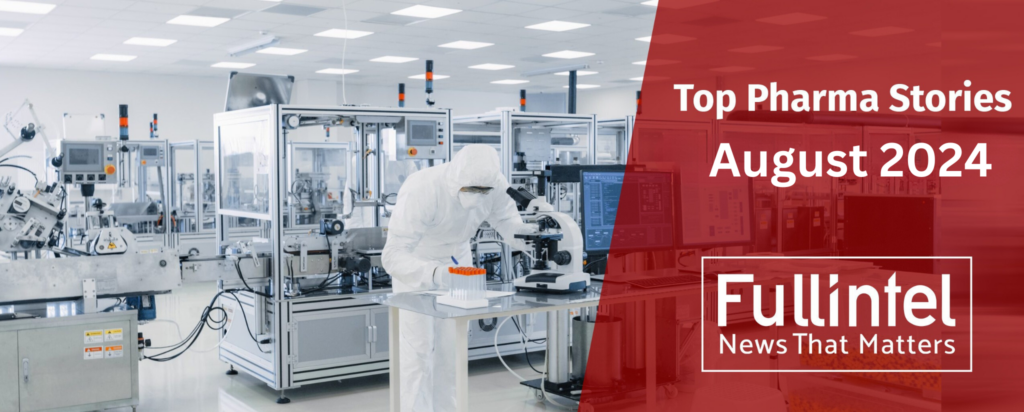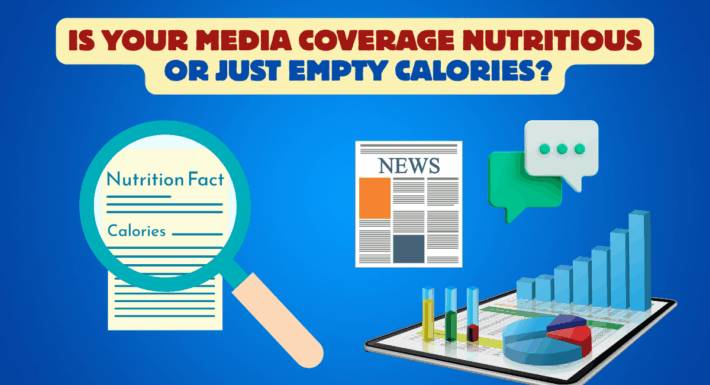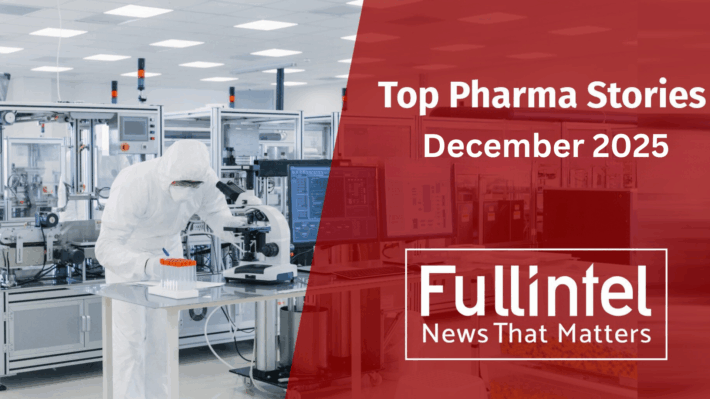Top Pharma News in August 2024

This month’s pharmaceutical industry news highlights a dynamic landscape where cutting-edge technology intersects with global health challenges. The sector continues to push the boundaries of medical innovation, with breakthroughs in neurotechnology and biotechnology taking center stage. The industry also grapples with ongoing public health concerns, underscoring the critical role of rapid response and adaptability in managing global health crises. Economic and regulatory shifts are reshaping the healthcare landscape, with developments in drug pricing policies and market access strategies. The integration of artificial intelligence in drug discovery and development continues to be a key trend, driving notable collaborations and investments. Legal and regulatory challenges related to drug development and approval also persist. As the industry navigates these multifaceted issues, Fullintel Hub remains a key resource, providing the latest trends in the pharmaceutical sector with concise insights and accessible data to support informed decision-making.
August’s Top Pharmaceutical News Highlights WHO’s Mpox Emergency Declaration, Medicare’s Drug Price Negotiations, and Neuralink’s Successful Brain Implant Trial
In this month’s newsletter, we focus on three significant developments that have gained media attention in the pharmaceutical landscape: the World Health Organization’s (WHO) declaration of mpox as a global public health emergency for the second time in two years, Medicare’s announcement of favorable results from its drug price negotiations, and Neuralink’s report of a successful second brain implant trial without thread retraction issues.
The WHO declares an mpox emergency in the Democratic Republic of Congo and neighboring countries, dominating media coverage and public engagement this month. The outbreak of a new, more transmissible viral variant prompts the WHO to allocate emergency funds and call for vaccine donations to contain the spread. Following closely in terms of media interest is the U.S. government’s announcement of Medicare drug price negotiations under the Inflation Reduction Act. This initiative, to reduce user costs on 10 widely used prescription drugs, sparks social media discussions about healthcare affordability, government intervention in drug pricing, and potential stifling of innovation. Emerging reports of Neuralink’s second brain-computer interface trial are starting to circulate, showing promising initial results. Although media coverage and social engagement are still relatively low as the news begins to spread, early accounts indicate that the patient has successfully used the implant for gaming and 3D design. This apparent progress since the first trial suggests advancements in neurotechnology, though fuller details and wider public reaction are yet to unfold as the story develops.
A Break-Down of Recent Trending Stories:
The WHO declares mpox a global health emergency for the second time in two years, following an outbreak in the Democratic Republic of Congo that has spread to neighboring countries. This resurgence involves a new, more transmissible variant known as clade Ib, raising alarms about its potential for rapid spread through close contact, including sexual transmission. While typically mild, the disease can be fatal in rare instances, particularly affecting children. In response, the WHO allocated $1.5 million in emergency funds and aims to raise an additional $15 million for initial containment efforts while actively seeking vaccine donations and further funding to control the outbreak effectively. WHO officials emphasized the urgent need for more research on transmission patterns in Congo and accelerated efforts to develop and distribute vaccines. This situation garners significant media attention and social media engagement, with the coverage spiking on August 16. The overall sentiment of the coverage remains predominantly neutral, suggesting a measured, factual approach to the news. Public reactions reflect the gravity of the situation, with “Sad” being the dominant emotional response, likely due to concerns about the outbreak’s impact, especially on children. Although this is a foreign crisis, the US public is extremely concerned noted by the highest share of coverage and engagement across health news stories in August.
.
Medicare’s Landmark Drug Price Negotiations Face Public Skepticism Amid Industry Opposition
The U.S. Medicare program takes a step toward reducing prescription drug costs by announcing successful negotiations for lower prices on 10 widely used medications. This move, part of the Inflation Reduction Act, is projected to save the government $6 billion annually. The negotiated drugs include treatments for common conditions such as blood clots, diabetes, and cancer, with price reductions ranging from 38% to 79% off current list prices. While this initiative aims to alleviate the financial burden on both the government and patients, public reaction remains notably mixed. Media interest peaks from August 15 to 18, indicating widespread attention to the announcement, which comes into the spotlight on August 15. About three-quarters of the coverage is neutral, suggesting a wait-and-see approach from many observers. The remaining media coverage is either positive or negative. Positive sentiment arises from potential cost savings and increased drug accessibility, while negative reactions stem from concerns over impacts on pharmaceutical innovation. Interestingly, around three-fourths of the public reaction to the news is “Angry,” indicating frustration with the current drug pricing. Skepticism about the effectiveness of the negotiations elicits a “Laugh” reaction on social media.
Neuralink, Elon Musk’s neurotechnology company, reports significant progress with its second human trial of a brain-computer interface. The implant, designed to enable paralyzed patients to control digital devices through thought, shows improved performance compared to the first trial. The second patient, identified as Alex, successfully uses the device to play video games and learn 3D design, demonstrating the potential of this new technology. Unlike the first patient, Noland Arbaugh, Alex does not experience the “thread retraction” issue that initially affects the signal measurement. The news of Neuralink’s advancements generates significant media attention and public interest, with coverage towards the end of August. The trending score reaches its highest point of 5 during this period, indicating intense media interest in the story. The sentiment surrounding the news remains predominantly neutral, with 87% of the coverage adopting an impartial tone, likely due to the complex nature of the technology and the need for cautious reporting on medical advancements. Public reactions on social media reveal a mix of emotions. The majority of responses express positive sentiments, with “Love” (43%) and “Wow” (24%) reactions together accounting for over half of the overall response. The success of the second trial and the improvements made since the first implant highlight Neuralink’s rapid progress in addressing challenges. A minority of reactions express negative sentiment, likely due to ethical concerns and skepticism about the long-term implications of neural interfaces. These “Angry” or “Sad” responses reflect ongoing debates about the societal impact of this technology.




